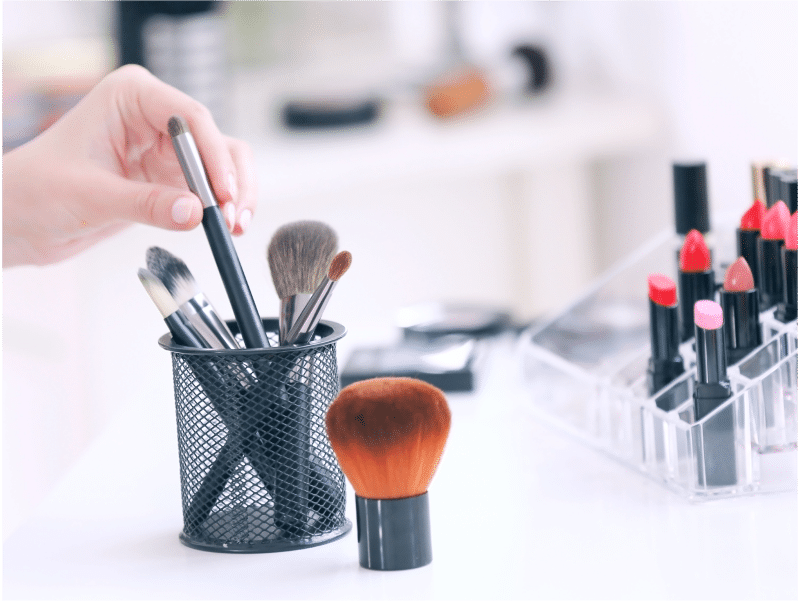The multi-billion-dollar cosmetics industry is growing exponentially. Research shows that the global cosmetics market will reach an unprecedented growth of $560.5 billion by 2030[1], up from $380.2 billion in 2019[2]. There is a growing demand from consumers who are also increasingly concerned about the safety, efficacy, quality, and sustainability of cosmetic products, among other factors.
To adapt to this dynamic nature of the industry, regulations play a critical role in not only protecting the customer, society, and planet but also for businesses to continuously innovate, maintain a competitive edge and mitigate future risks.
Understanding regulatory changes in the cosmetic industry
Like the cosmetics industry and its consumers, the regulatory environment for cosmetics is also constantly evolving, new regulations are introduced periodically to reflect the latest scientific evidence and to ensure better standards. With the Regulatory bodies like the United States Food & Drug Administration (USFDA)[3] and the European Commission Cosmetics Products Regulations (EU-CPR)[4] dictate the standards for marketing cosmetics, they also govern standards for substances used (as per their classification), raw materials/ingredients (referred in Cosing Ingredients Database), manufacturing, testing, distribution, marketing, advertising, labelling of cosmetics products. The USFDA and the EU-CPR have the highest global influence and are often referred to while designing, amending or entrusting cosmetics regulations in other countries. They are looked upon for the latest updates, stringent monitoring and penalties for noncompliance.
The ever-evolving industry is driven by changes in the regulations and active participation of countries to roll out changes.
Some examples of recent updates in cosmetic products regulations are:
- ban on animal testing in all phases of cosmetics products
- prohibitions in the use of environmentally harmful plastic microbeads
- ban on UV filters in countries like New Zealand and Australia
- ban or restrictions on multiple ingredients
- addition of new allergens in the EU list of Allergens
Other than these, the very recent changes in the regulations include:
- release of final orders for marketing sunscreens as OTC
- prohibition of use of fragrance allergen Butylphenyl methylpropional in the EU
- ban on use of resorcinol in eye lash dye products in the EU to name a few
There are various drivers to impose regulatory changes, scientific research is the most predominant of all drivers. Factors like environmental changes like ozone depletion, microplastics accumulation in oceans and reef health can also influence ingredient restrictions in cosmetics. Literature and review of potential carcinogens, edocrine disruptors and mutagens is periodically conducted within Parliaments to decide on the usage of concerned ingredients.
The impact of cosmetic regulations and their importance
Noncompliance can have serious implications on the brand reputation. It can result in loss of trust in consumers, legal notices, revocation of licenses and removal from the market. Countries are imposing stricter laws to ensure consumer safety is at the forefront. Among various methods to curb noncompliance is random market sampling of products and conducting thorough scrutiny for all regulatory aspects of the product. This is important to detect obvious blunders like counterfeit goods, adulterations, misleading claims and compromised user safety.
The impact of regulations and their growing importance within the cosmetics industry is a positive step for the consumers. Regulations assure access to safer, ethical, environmentally friendly, and better-quality products. While it may entail a high cost of compliance for businesses, it is to safeguard and invest in the future and to avoid fines, penalties, legal recourse, product recalls and loss of brand reputation. Businesses may need to invest in compliant practices of cosmetic manufacturing, product testing, distribution and industry governance.
Regulations also drive fair marketing practices in the industry. The EU cosmetics regulation has outlined the common criteria for claims, these are Legal Compliance, Truthfulness, Evidential Support, Honesty, Fairness, Informed Decision-Making. A product must satisfy all these criteria when entering the EU market. The Advertising Standards Authorities police claims on all media of communication in most of the countries. The EU has an entire Technical Document released to check claims compliance. Abiding by the regulations, the brands must provide strong back up to substantiate all claims made about the products. Claims influence purchasing behavior of consumers, but to ensure fair competition in the market, scrutiny of what is being said about the product is an important regulatory step.
Ultimately, regulations in the cosmetic industry create a level playing field for all cosmetic companies, where the same standards must be met by all businesses and fair competition is promoted amongst manufacturers.
However, businesses in the cosmetics industry can also accrue various benefits by being up to date on regulations and enforcing them within their operating models, processes, and products like.
![]()
- Gain consumer trust and loyalty, which will enhance brand reputation among its customer bases, while being in a good position to respond to any claim by customers and regulators on compliance-related issues.
- Staying ahead of the industry curve by staying compliant on environmental claims like clean, green, natural and organic to meet the growing demand of such products. Greenwashing is a term for products that make misleading claims about the naturality of the products, carbon footprints of the brand and organic content. Certifying a product is a good tool to ensure transparency whilst being compliant with the regulations.
- Thirdly, being up to date on regulations allows businesses in the cosmetics industry to continuously innovate in terms of safer and more ethical processes, products and ingredients. This potential for innovation to find alternatives to the status quo is generally unlocked by an evolving regulatory requirement. Examples of this are:
- the ban on the age-old industry practice of animal testing, which has driven beauty brands to find alternative ways of testing and don’t involve animals
- the ban on harmful ingredients, which has led to more innovation in leveraging safer, ethical, and more environmentally friendly alternatives
Furthermore, as Environmental-Social-Governance (ESG) considerations grow in importance, businesses in the cosmetic industry can benefit by being up to date and complying with ESG regulations, which can also accrue them benefits around access to ESG finance/investments, improvement in financial. Such companies can mitigate future risks better.
Need support on cosmetic regulations? Contact RegASK expertsHow RegASK helps cosmetic companies
For cosmetic companies to ensure product compliance, they must be well-informed of the ever-changing regulations impacting their business. This can be challenging if the company is operating globally with lean resources and headcounts. The volume and pace of regulatory changes, plus the language barriers to access and understand local regulations, create headaches for regulatory affairs teams. As a result, many companies are looking for efficient and reliable solutions that act as an extended team to help them navigate the regulatory changes.
After working with hundreds of clients in the cosmetic industry, we understand these pain points and that’s why we’ve developed RegAlerts, an AI-Driven regulatory intelligence platform that captures regulatory changes in a more comprehensive, timely, and accurate manner. With RegAlerts, you can get fast and easy access to regulatory intelligence curated specially for your business, cutting through the noise, saving you time and boosting efficiency. Moreover, through RegAlerts, you can connect with our global network of local experts to deep dive into any specific regulatory change and understand the impact on your business. This tailored service helps you overcome any potential lapses in product compliance with local regulations.
In addition, if you are expanding into new markets or new product categories, RegASK’s Cosmetics Go-To-Market Regulatory e-Guidebooks is a great resource to guide you through the regulatory process. The e-Guidebooks offer a comprehensive and practical summary of the local regulations and compliance requirements for cosmetic products. The regulatory topics covered are:
- Cosmetic ingredients regulations
- Labelling, claims, and advertising regulations
- Registration process and requirements
- Importation requirements
If you’d like to hear more about these solutions, feel free to get in touch with us by filling up this form.
Have questions on cosmetic regulations?
Speak to our experts
References:
[1] Cosmetics Market (By Category: Skin & sun care products, Hair care products, Deodorants & fragrances, Makeup & color cosmetics; By Gender: Men, Women, Unisex; By Distribution Channel: Hypermarkets/Supermarkets, Specialty Stores, Pharmacies, Online sales channels, Other) – Global Industry Analysis, Size, Share, Growth, Trends, Regional Outlook, and Forecast 2021 – 2030
[2] Cosmetics Market by Category (Skin and Sun Care Products, Hair Care Products, Deodorants & Fragrances, and Makeup & Color Cosmetics), Gender (Men, Women, and Unisex), and Distribution Channel (Hypermarkets/Supermarkets, Specialty Stores, Pharmacies, Online Sales Channels, and Others): Global Opportunity Analysis and Industry Forecast, 2021-2027
[3] FDA Cosmetics Guidance & Regulation
[4] Cosmetics Europe – UNDERSTANDING THE COSMETICS REGULATION

